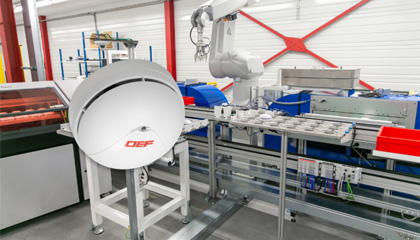Knock Knock… it’s no Coincidence
BS5839-1 is a code of practice and provides as series of recommendations rather than requirements. Within this standard reference is made to both the terms – ‘double knock’ and ‘coincidence’.
The meaning and application of these is distinctly different from one another, but how exactly do they differ?
Double Knock
A “double knock” alarm is a type of alarm verification process used to reduce false alarms. It requires two separate, distinct triggers or alarm events to occur before the system activates a full alarm response.
The double knock arrangement is based on the concept of two successive signals being received from the same device. Only once the second signal is received, will the desired alarm response be triggered.
- Initial Alarm: When a potential fire or alarm condition is detected, the system registers the first alarm event. This could be triggered by a single fire detection sensor, e.g. smoke or a heat detector.
- Confirmation Alarm: To activate a full alarm response, a second and separate alarm event must occur independently. This could be a repeat occurrence from the same detection device or a completely different detection device.
- Full Alarm Activation: Only when both the initial alarm and the confirmation alarm are triggered does the system initiate a full alarm response. This may include activating fire alarm sounders or beacons, notifying authorities, or taking other actions to alert people and respond to the emergency.
The purpose of the double-knock principle is to mitigate and reduce false alarms that can result from various factors, such as:
- Malfunctioning sensors: A single malfunctioning sensor could trigger a false alarm activation, application of a second independent alarm event helps confirm the validity of the alarm.
- Environmental factors: Environmental conditions like dust, humidity, or temperature fluctuations can sometimes cause sensors to give false readings. A double-knock system helps filter out these false readings.
- Human error or tampering: In some cases, people may accidentally or intentionally trigger alarms. The double-knock system reduces the chances of these incidents leading to a inadvertent full alarm activation.
By requiring two separate events to initiate an alarm, double-knock systems improve the reliability and accuracy of fire detection, increasing the likelihood that alarms are genuine and requiring a response. This is especially crucial in settings where a false alarm can lead to costly evacuations, business interruptions, or unnecessary dispatches of emergency services.
BS5839-1 only refers to double knock in notes and suggests that the term itself is unofficial but does not provide any other term for it.
Double knock is not a specific requirement included in any part of any of the recommendations provided for in BS5839-1.
Coincidence Detection
Coincidence detection on the other hand, is an “arrangement designed so that an output is obtained only when at least two independent input triggering signals are present at the same time”.
BS5839-1 details coincidence detection as a defined term, with the definition as written above.
Coincidence detection involves the use of multiple detectors or sensors to verify the presence of a fire condition. It is a technique employed to reduce the occurrence of false alarms while enhancing the reliability of fire detection.
Typical example of a coincidence detection application:
- Multiple Detectors: Fire alarm systems often incorporate two or more types of detectors, e.g. smoke, heat, carbon monoxide or flame detectors. These fire sensors may operate on a multitude of different detection principles and generally have many different response characteristics.
- Simultaneous Activation: To trigger an alarm using coincidence detection, the system would typically requires multiple detectors to activate simultaneously or within a close time frame. When two or more of these detectors detect a fire condition simultaneously, it is considered a valid indication of a potential fire event.
- Confirmation: When the system detects this simultaneous activation of multiple detectors, it confirms the presence of a fire condition and activates the alarm. This confirmation process helps reduce the likelihood of unwanted alarms being triggered a single fire detection device due to false positives or environmental factors.
- Alarm Response: Once the system confirms that a credible fire condition may have occurred, it activates the alarm notification devices, such as audible and visual alarm devices, and notification to monitoring stations or the emergency services. This ensures that appropriate action is taken in response to the verified fire event.
Coincidence detection is also made reference to in BS5839-1 with the recommendations associated to the use of “staff alarms” as a method that could be employed to delay the instigation of a fire alarm caused by the possible unwanted activation by as single device, by allowing sufficient time for such a fire event to be initially physically investigated.
Coincidence detection in fire alarm systems is particularly useful in environments where false alarms can be costly or disruptive. By requiring multiple detectors to signal a fire event, the system minimizes false alarms caused by factors like cooking smoke, dust, or environmental changes. It provides a more reliable and accurate indication of a genuine fire emergency, which is critical for the safety of occupants and the efficient operation of fire response procedures.
The difference?
Double knock and coincidence detection are both techniques used in fire alarm systems to reduce false unwanted alarms and enhance the reliability of an automatic fire detection system. The main difference lies in the verification process:
- Double knock detection permits two occurrences of the same fire detector to verify an alarm condition.
- Coincidence detection involves the simultaneous or closely timed activation of two or more distinct and singly individual fire detectors to confirm a fire event.
Both methods aim to improve the reliability of fire detection while minimising unwanted false alarms, but they are suited for different scenarios and have distinct verification criteria. Double knock is more specialised and applies to a single detector, while coincidence detection is more versatile and employs the use of multiple detectors for verification.


